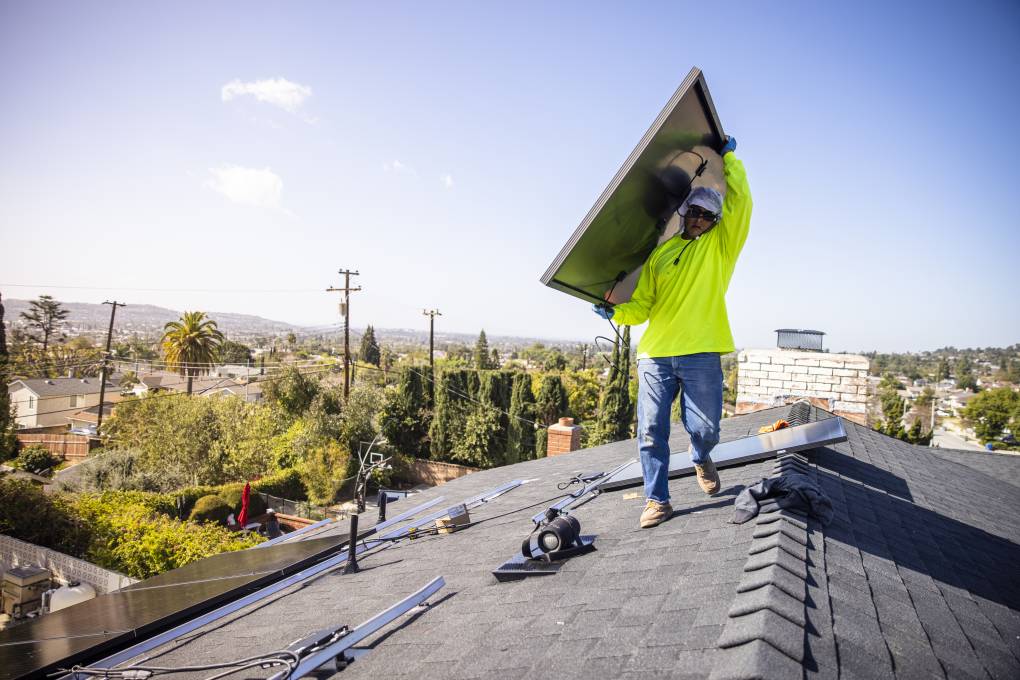Undermining the economics of rooftop solar also complicates the statewide push to go electric, much to the chagrin of property owners and the entire electrification industry .
“Solar energy is one of the biggest sources of income for a homeowner who is wondering, ‘Why should I invest all this money in a water heater, a new hot water system?’” David said Chanin, co-founder of FutureFit Partners, a company that helps housing and apartment owners make these investments. “Under these new rules, I seriously fear that plans to electrify entire buildings will simply no longer happen.”
And while the overhaul aimed at single-family solar users primarily directly affected homeowners, it’s apartment renters who are likely to be most affected by the current decision.
The current system “is really the only mechanism we have to allow many low-income people living in multifamily housing to get solar, clean energy,” said Andrew Dawson, a lobbyist with the California Housing Partnership, a non-profit organization that advocates for affordable housing. . “For electrification purposes, solar power is really important to ensure that people’s bills don’t increase significantly. »
Other programs exist to help low-income Californians go green. The state’s Solar on Multifamily Affordable Housing program provides financial incentives for homeowners to invest in new panels and is funded under a different formula. But coverage of this program is spotty across the state, Dawsom said.
Andrea Barnier of Self-Help Enterprises, a public housing provider in Visalia, said only 15 of the organization’s 40 multifamily projects will be safe from the policy change through this state program. For the remaining sites and all future apartment projects, she called the new rule a “potential disincentive against all-electric design.”
In a filing with the CPUC, the state’s three investor-owned utilities note that multifamily solar is still a relatively rare phenomenon in California. At last count, only 217 residential facilities across the state are using the program, along with another 513 mixed residential and commercial sites.
But while the state pledges to simultaneously boost apartment construction, the purchase of electric vehicles and the move away from gas stoves and water heaters, critics say that even if support for energy Distributed solar may not be vital now, it will be in the near future.
“As climate impacts such as increased heat continue to increase, there is a continued need for grid independence and alternative energy solutions to batteries during repeated power outages and emergencies, which also impacts our ability to develop resilient communities,” Barnier said.
A political outburst to come?
It may only be a matter of time before this argument is dragged out of the highly technical and largely neglected halls of the CPUC and into the broader realm of partisan politics.
In July, the California Democratic Renters Council, a coalition of tenant rights, housing and environmental justice groups, sent a letter to the five CPUC commissioners. He denounced the proposed regulatory change that would “require tenants to purchase all of their electricity from the utility, even when it is generated on their own roof” and “discriminate against tenants by not giving them the same equitable treatment than owners of single-family homes.”
Although many observers expect the CPUC to finally vote in favor of the overhaul next week, the scale of the coalition that has mobilized against the reform could be hard for other lawmakers to ignore. state, said Raymer, representing the construction industry.
“From a political point of view, if this bill passes as proposed, I think Parliament will be back in 2024 to solve this problem,” he said.
#rooftop #solar #policy #eviscerate #solar #market #hurt #clean #energy #goals #critics #KQED
Image Source : www.kqed.org

